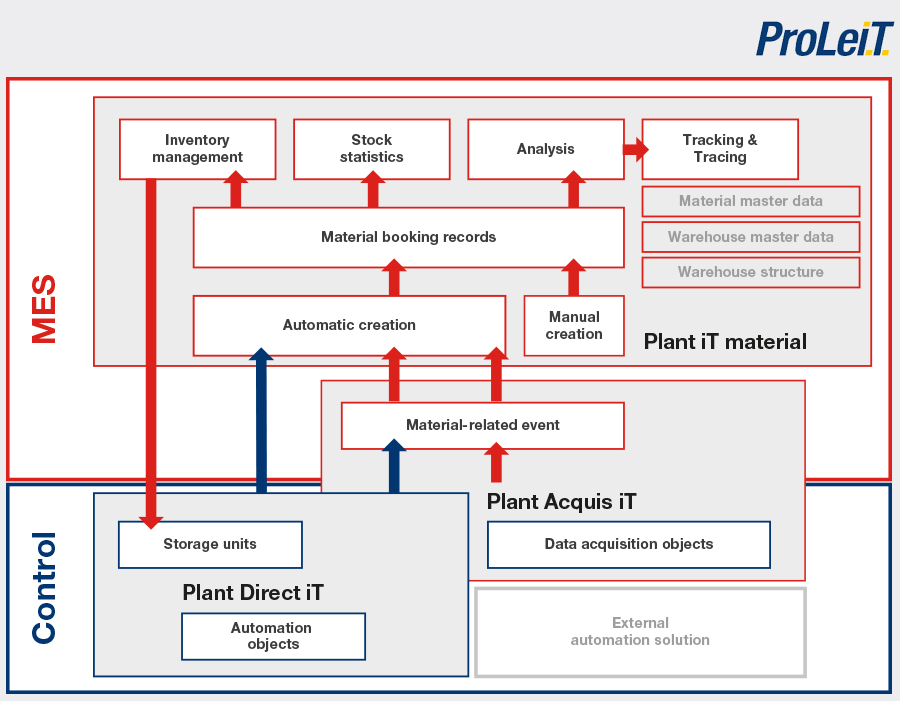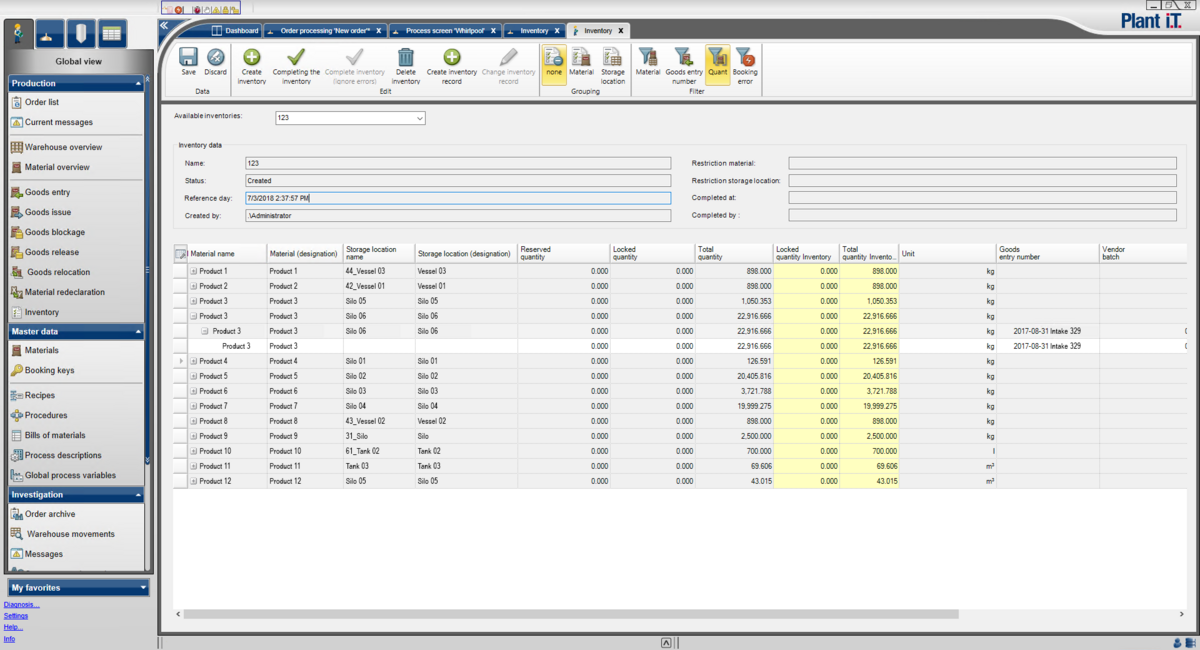Some advantages of Plant iT material
Master data management
The relevant properties for storage locations, materials and warehouse transactions are parameterised in the system. Besides an extensive set of properties, Plant iT material considers the special requirements of the process industry when defining storage locations by differentiating various types:
- Automatic storage location (storage unit):
Permanently connected to the plant, material transaction is controlled by an automation system (e.g. tanks, silos) - Manual storage location:
No connection to the plant, material transactions take place manually (e.g. forklift truck) or are controlled by an external system (e.g. automatic transport system) - Docking storage location:
Temporarily connected to the plant via automated docking equipment, material transactions are controlled by an automation system (e.g. containers, big bags)
Materials with an identical set of relevant properties are summarised in material classes (e.g. liquid raw materials, granulates, finished products) and described by parameterising these properties. The system differentiates between material parameters and batch parameters which enable the correct consideration of such material properties which may vary with each individual material batch (e.g. active agent concentration).
Warehouse transactions are initially classified according to booking types (e.g. inflow, outflow) and additionally rendered more precisely via transaction keys (e.g. goods receipt of silo goods, automatic dosing). Each recorded material transaction is assigned a booking type and a transaction key to enable precise selection for evaluations. The recording of material transactions usually takes place automatically, triggered by system-internal standard interfaces from the individual system components, but can also be executed manually via the Plant iT material user interface.
Investigations and evaluations
Inventory overviews (warehouse status) and transaction overviews (list of selected material transactions) are available directly in Plant iT material. The flexible combination of the following selection criteria
- Warehouse/Storage location,
- Material/Material classes,
- Time period,
- Order/Batch ID,
- Goods receipt ID,
- Supplier batch,
- Booking type and
- Transaction key
turn these standard views into a very efficient tool. Details about each individual material transaction can be viewed online at any time and the use of special archiving mechanisms ensures quick response of the system even in case of large data volumes without the loss of detailed information.
Depending on the storage location type, Plant iT material allows direct operator interventions from spontaneous stocktaking to triggering a docking or undocking process for a container.
Batch tracing
The standard evaluations (inventory and transaction overview) provide direct access to the complete batch tracing function of Plant iT material. Starting at a freely selectable entry point in the storage model, investigations can be carried out in both directions. An overview divided into predecessors (upstream) and successors (downstream) with presentation of the information similar to the warehouse and transaction overview facilitates navigation.
With an order-related operating mode using Plant Batch iT or Plant Liqu iT, their batch or sequence records are interconnected with batch tracing. Plant iT material enables direct navigation to a batch record of Plant Batch iT or Plant Liqu iT and vice versa, ensuring that plant sections which cannot be defined as a storage location can still be included in the batch tracing.



